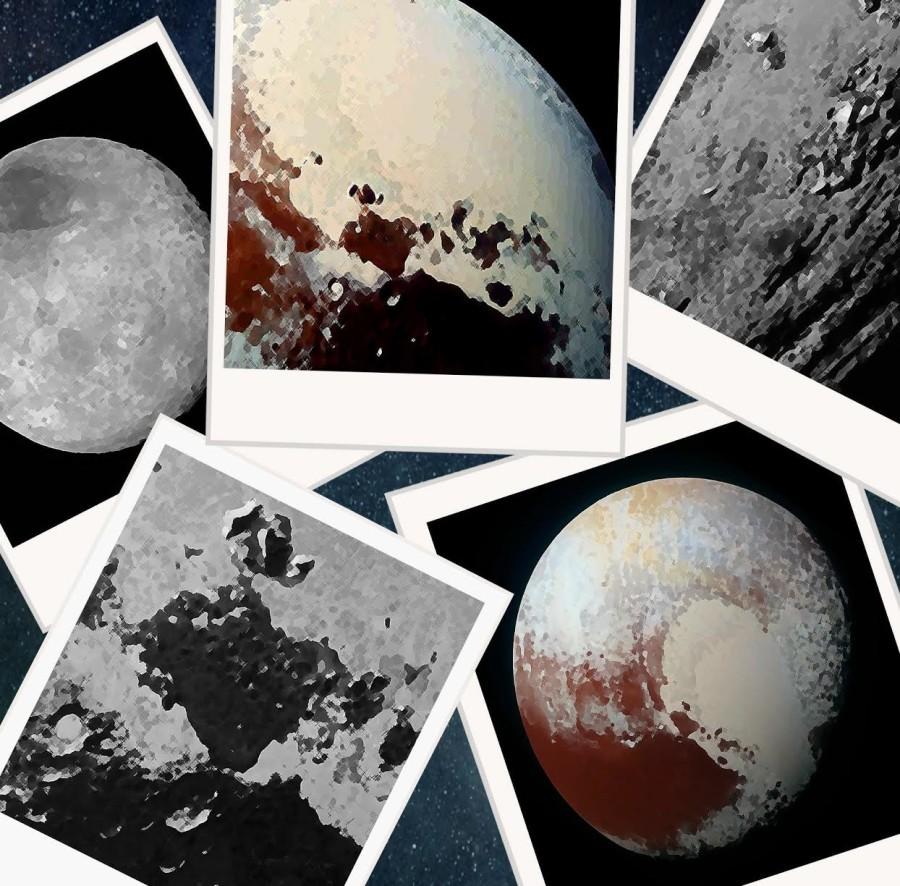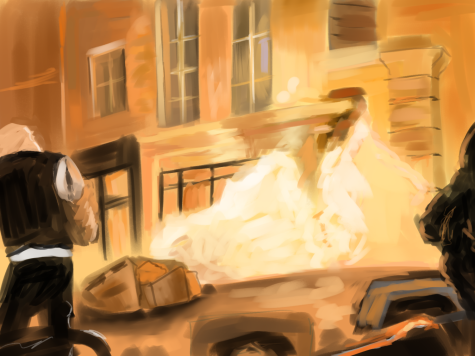New Pluto Photos: Anything but Distant!
November 12, 2015
NASA tweets on September 10: “It’s complicated… Pluto’s surface, that is. New close-ups from @NASANewHorizons #PlutoFlyby.” Accompanying the words, a textured, multi-tonal, black and white image of a surface glistens, and scientists begin to reconcile the mystifying, meticulous pictures with the current perception of the popular “dwarf planet.” Amid the excitement, researchers make preliminary observations of Pluto based on these groundbreaking photos.
These captured images originate from NASA’s New Horizons, a crewless, nuclear-powered spacecraft performing flybys of Pluto. Launched almost ten years ago, this probe serves as an attempt to study Pluto, its moons, and the Kuiper Belt of asteroids. On July 14, the spaceship made its closest approach to Pluto with only 50,000 miles of separation. An overwhelming majority of the images feature astonishing close ups.
With its high resolution, the Long Range Reconnaissance Imager (LORRI) serves as the lens capturing the pictures. Since data transfers 100,000 times slower from space, these photos are being released day by day as NASA gradually processes them. The first major release of snapshots began on September 5, and completion of the transfer is expected to occur in a year.
After exploring the crevices and topography of Pluto, Shivani Pillalamarri ‘17 reflects, “It’s beautiful, like a strange little penny. Amazing what technological advances can do.” Pillalamarri alludes to the LORRI system, which could shape the future of space exploration. This machine eloquently blends art and technological ingenuity, allowing for a more efficient method of documentation.
Amazingly, Pluto displays more geographical and historical diversity than previously anticipated. Expansive icy plains called “Sputnik Planum” dominate the unique terrain. Young mountains, no older than 100 million years old, sprinkle the surface of the planet. The distinct tops ooze filaments of ice composed of methane, nitrogen, and carbon monoxide. Incredibly, ancient cratered terrains of the Cthuhu region coexist seamlessly with the younger mountains. Based on this evidence, scientists can safely speculate that Pluto’s crust continues to evolve.
Despite several pronounced features, Pluto holds many unexplainable obscurities that require further analysis. Although unconfirmed, dune-like figures seem to encapsulate the surface. This observation raises questions about Pluto’s thin, low-pressure atmosphere; in such an atmosphere, it is theoretically impossible to produce such a wind force for the creation of dunes.
For many, a question arises: how does acquiring more knowledge of Pluto affect those on Earth? Beyond providing astrological facts, this historic flyby will alter perspectives and propel the desire to learn. The mission reflects an enduring work ethic that our ambitious future generations can model and use as a guide.
In reaction to these mysteries, Caleb Woo ’18 states, “This is an exciting discovery that will only open the doors for further exploration and insight.” His words underscore the thrills and frustrations associated with new discoveries; nevertheless, the burning passion for knowledge propels the researchers to continue their efforts.
According to Alan Stern, the head researcher of the New Horizons mission, “Pluto is showing us a diversity of landforms and complexity of processes that rival anything we’ve seen in the solar system.”
“Complexity” accurately summarizes our new perspective of Pluto. Since the mission will conclude in 2019, a sufficient amount of time still exists to assimilate the new information into scientific methodology. New Horizons will continue to pioneer the exploration of the Solar System and research the distant Kuiper Belt. Keep in mind that hundreds of more photos have yet to be relayed to Earth; stay tuned for more observations, discoveries, and unexplainable mysteries!




Vivian Yi • Nov 16, 2015 at 2:04 pm
These new photos about pluto really show just how far reaching the outerspace imaging is
April Garrett • Nov 16, 2015 at 2:00 pm
This article is really well written, first off. But also, I think it’s really interesting how they are still researching and observing Pluto. The surface of Pluto could really help scienteist learn more about the differences in surfaces depending on the distance away from the sun! It’s really interesting!
Charlize Chen • Nov 16, 2015 at 1:51 pm
I think it’s interesting how we are discovering new things about science every single day. I’m glad that NASA released pictures of Pluto, and I think it’s vital to explore new aspects in space that could affect our daily lives.
Renee Stemcovski • Nov 16, 2015 at 1:50 pm
Current events are my favorite to read about! New developments in science are fun to learn about, good work on keeping us updated on things going on outside our community
Terri Waldron • Nov 16, 2015 at 12:26 pm
I think this is a very good article because it has a lot of interesting information about the science breakthroughs in it
Terri Waldron • Nov 16, 2015 at 12:25 pm
I thought this was really interesting. I never knew this much about Pluto.
Cate Longino • Nov 16, 2015 at 12:24 pm
I think it’s really interesting how new discoveries yield further knowledge about Pluto. There is so much that we don’t know about the universe, but with new technology we learn so much about it. I can’t wait to here what new discoveries will be made!
Rose Morrissey • Nov 16, 2015 at 12:10 pm
Woah, Pluto is only 100 million years old! Wow
CarolineSchmitt • Nov 16, 2015 at 12:06 pm
I found it very interesting how it takes 10,000 times longer to transfer data from space, and how Pluto is only 100 million years old. This is very surprising!!!